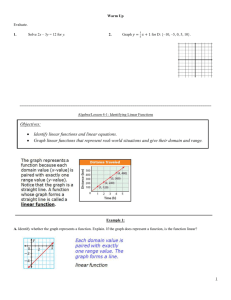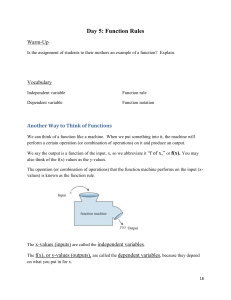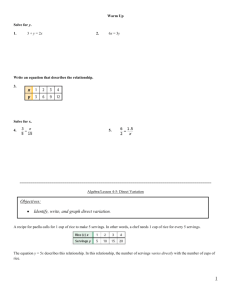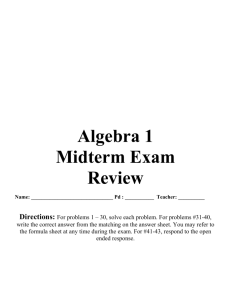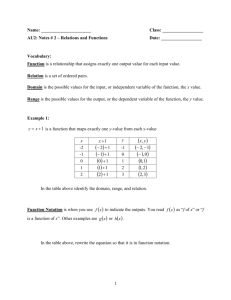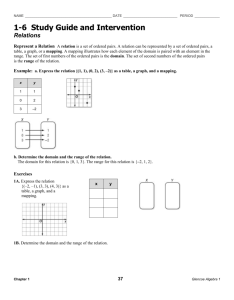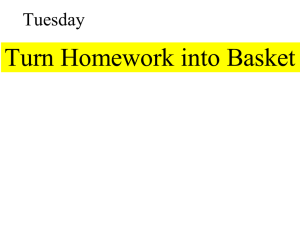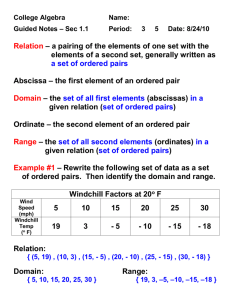Lesson 3-2(Word)
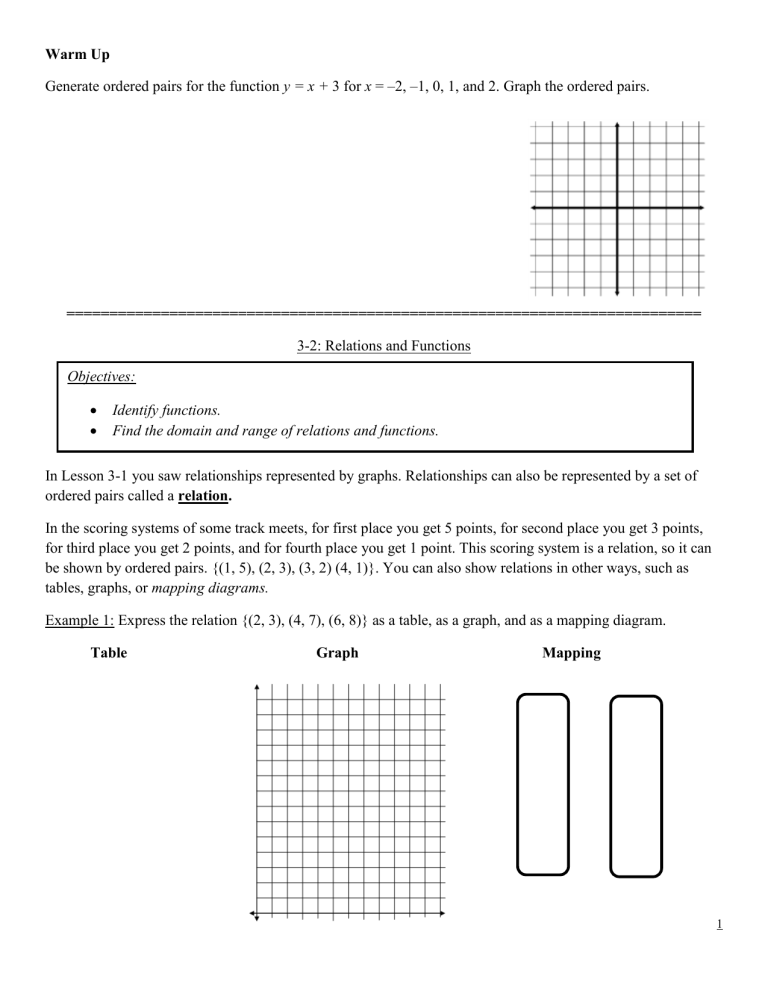
Warm Up
Generate ordered pairs for the function y = x + 3 for x = –2, –1, 0, 1, and 2. Graph the ordered pairs.
==========================================================================
3-2: Relations and Functions
Objectives:
Identify functions.
Find the domain and range of relations and functions.
In Lesson 3-1 you saw relationships represented by graphs. Relationships can also be represented by a set of ordered pairs called a relation.
In the scoring systems of some track meets, for first place you get 5 points, for second place you get 3 points, for third place you get 2 points, and for fourth place you get 1 point. This scoring system is a relation, so it can be shown by ordered pairs. {(1, 5), (2, 3), (3, 2) (4, 1)}. You can also show relations in other ways, such as tables, graphs, or mapping diagrams.
Example 1: Express the relation {(2, 3), (4, 7), (6, 8)} as a table, as a graph, and as a mapping diagram.
Table Graph Mapping
1
a.
C.I.O.-Example 1: Express the relation {(1, 3), (2, 4), (3, 5)} as a table, as a graph, and as a mapping diagram.
Table Graph Mapping
The domain of a relation is the set of first coordinates (or x -values) of the ordered pairs. The range of a relation is the set of second coordinates (or y -values) of the ordered pairs. The domain of the track meet scoring system is {1, 2, 3, 4}. The range is {5, 3, 2, 1}.
Example 2: Give the domain and range of the relation.
C.I.O.-Example 2: Give the domain and range of the relation. b.
2
A function is a special type of relation that pairs each domain value with exactly one range value.
Example 3:
A.
Give the domain and range of the relation. Tell whether the relation is a function. Explain.
{(3, –2), (5, –1), (4, 0), (3, 1)}
B.
Give the domain and range of the relation. Tell whether the relation is a function. Explain.
C.
Give the domain and range of the relation. Tell whether the relation is a function. Explain.
3
C.I.O.-Example 3:
Give the domain and range of the relation. Tell whether the relation is a function. Explain. b.
a. {(8, 2), (–4, 1),
(–6, 2),(1, 9)}
Lesson Quiz: Part I
1. Express the relation {(–2, 5), (–1, 4), (1, 3), (2, 4)} as a table, as a graph, and as a maping diagram.
Table Graph Mapping
4
2. Give the domain and range of the relation.
Lesson Quiz: Part II
3. Give the domain and range of the relation. Tell whether the relation is a function. Explain. p. 173: 15, 17-22, 25, 26, 29
5



